Aqua LinQ Network Interface – Part 4 – Squeezelite

Review Context
The LinQ and the new Sqeezelite renderer module will be listened to in the main system in combination with the Precision C1.2 DAC and Aqua Formula xHD v2 DAC. The rest of the system comprises the CH Precision L1 preamplifier, CH Precision A1.5 power amp, and Magico S1 MkII speakers. Available for comparison are the Grimm MU1, XACT S1 and Antipodes Oladra Music Servers, and the Aqua La Diva M2 CD transport. All networked components are connected to the Silent Angel Bonn NX + Genesis GX Switch and clock.
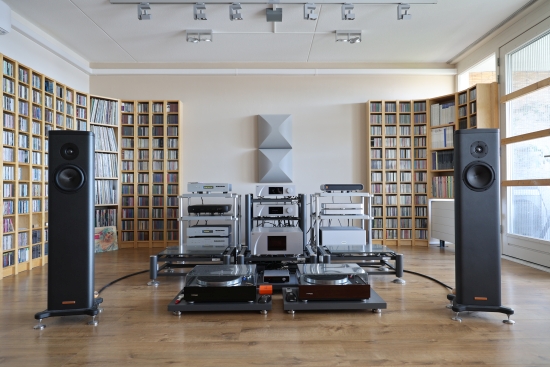
Listening
I already mentioned that the LinQ sounds fantastic with UPnP. But how does Squeeze compare? To test this under equal circumstances, I enabled both Squeeze and MinimServer on the Oladra and successively streamed to the LinQ via one of them at a time. Now, this was illuminating! So far, I’ve been used to Squeeze sounding engagingly upbeat and propulsive but considerably rougher and more bombastic than UPnP. This time, however, it was a very close call. It took me several comparisons before I could reliably identify one over the other. The difference is minimal, but if you listen attentively using various tracks, what emerges is that Squeeze still has a slightly more forceful delivery, whereas UPnP is slightly more fluid. But that’s it. Otherwise, the two formats are interchangeable. Honestly, I had not seen this coming. But it’s excellent news, as it allows using the LinQ either way that suits best.
Incidentally, although the CH DAC is my ultimate reference, its steep price makes it unattainable for most audiophiles. Nevertheless, its use in the context of this review beautifully illustrates how well the LinQ performs. Specifically, the LinQ with AES/EBU or S/PDIF provides better sound with the C1.2 DAC than native Roon on any of the available servers or Roon directly streaming to the C1.2’s streaming input.
The LinQ’s superb performance extends to using other, more affordable DACs. Indeed, in my tests, the LinQ performs just as well in combination with the CH DAC as with the Aqua Formula xHD v2 DAC. Speaking of the latter, there is a bonus when using the two together, as this enables AQlink to be used. This Aqua-proprietary I2S connection leads to a marked improvement over using AES/EBU or S/PDIF.
Squeeze sounding this good was the first big surprise, but when I tried Roon with Squeeze, I was in for another surprise!
The most significant current sonic disadvantage of Roon when playing natively so far has been that I feel the music is being held back from fully expressing itself, a bit like a phono cartridge terminated with a very low resistive value, draining some energy and expression to ground, slowing the pacing, and reducing the spriteliness. But to my astonishment, Roon playing via Squeeze to the LinQ, sounds immediately, and considerably better than Roon playing natively! It’s still not quite as incisive and direct as native Squeeze or UPnP, but it is not very far behind, either! Just as I had decided to leave the ecosystem dormant for a while, I must admit not having heard Roon sound this good in a long time.
But what about HQ Player Core + NAA? For those not up to speed, the LinQ is not compatible with Roon RAAT, and HQ Player NAA was the chosen alternative, with the Core + NAA twin module as its ultimate incarnation. Aqua has implemented the functionality so that it is pretty much plug-and-play. The downside of using HQP is that the protocol introduces a short delay when starting, skipping, or stopping the music. Still, I welcomed this method, as I was already starting to get unhappy with Roon, and although HQP was not quite as crisp and transparent as UPnP, this was the only way for me to make Roon sound good.
But with the Squeeze module, the plot thickens!
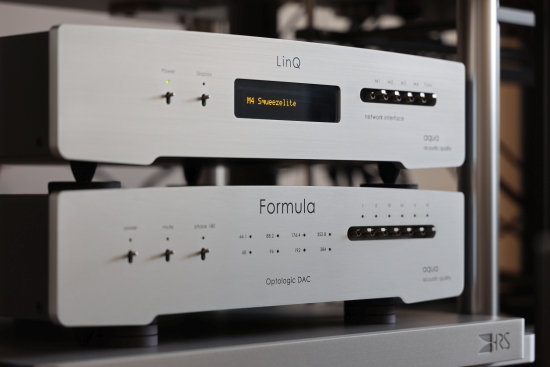
Coming from the Squeeze module, HQ Player still sounds very good. I’m not sure if it could be considered strictly better than Squeeze, but it’s definitely different. HQP has a distinctly robust and solid delivery with bass like the famous Wadia 861 CD player, the carved-from-granite kind. It’s rock-solid, impactful, and expressive. The Squeeze module has a nimbler and more light-footed delivery but with the same measure of incisiveness, expression, and dynamics. So, which one is better? Honestly, I can’t say, as it will depend on system synergy. For instance, if I still had the Magnepans or Apogee Divas, I would surely have preferred the extra slam and body from the HQ Player module. But with my current Magico S1’s, which, believe it or not, are pretty voluminous in the bass, I currently prefer the Squeeze module.
I’ve heard the positive influence of using Squeeze as a renderer for Roon on the same server before, but the extent of the improvement was never as profound as it is now with the addition of the LinQ!
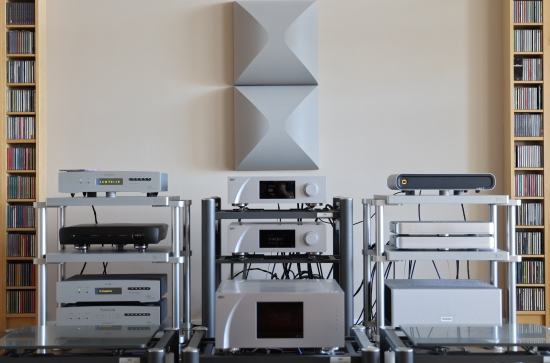
I also currently have the XACT S1 UPnP server available for comparison. At 12k, it’s not quite as costly as the Oladra, but it still sounds significantly better than Roon on its own on any server, even the Oladra. When using the Oladra with UPnP or Squeeze, it generally sounds best, and in this capacity, it puts up fierce competition for the XACT S1. On their own, the two servers compete in certain areas and differ in others. Of course, comparing servers to network players makes little sense, but I mention this to report what a difference the LinQ can make, even for Roon servers. When switching the Oladra to Roon and streaming via Squeeze to the LinQ, the combo’s performance still leaps ahead of the XACT S1! Now, that is something I did not see coming. Of course, this combination makes little economic sense, but it perfectly illustrates how sophisticated the LinQ is.
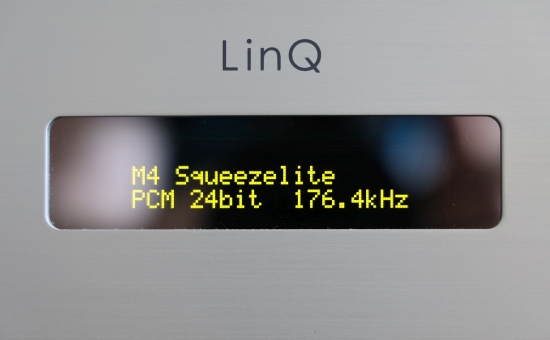
Depending on the selected output, the LinQ’s maximum resolution is PCM 32-bit 384kHz / DSD128. Roon can automatically resample any sample rate not supported by the DAC or the selected output.
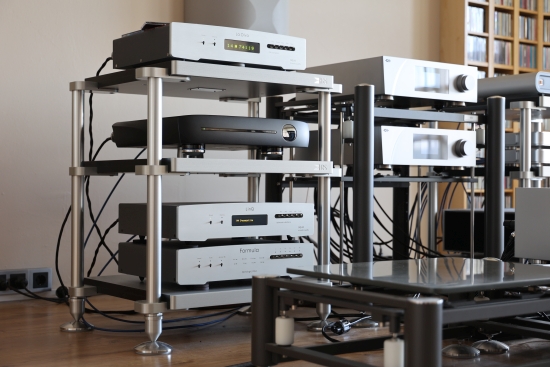
LMS on a regular computer
Having such high-end servers available is all well and good, and the results speak for themselves. But I realize it’s likely not what the Squeeze core audience will use.
It’s worth noting that Antipodes also offers far more affordable servers, especially when opting for a model that focuses predominantly on maximizing its server capacity. The K22 springs to mind, or the K41, which includes the same server engine as the K50.
But let’s take a few more steps back and install LMS on a standard computer. After all, this is how the ecosystem started, and the freeware nature of the LMS software remains an alluring benefit.
To test this, I installed LMS on my main Windows PC, which is recent and decently well-specced, but not excessively. It has plenty of processor speed and memory to allow me to do any music playback and office work on an ultrawide monitor without slowing me down, but no more than that. This PC is stationed in another room but connected to the same Router, albeit not via the Silent Angel NX + GX Switch and clock, to mimic a standard implementation that should be achievable even for those on a modest budget.
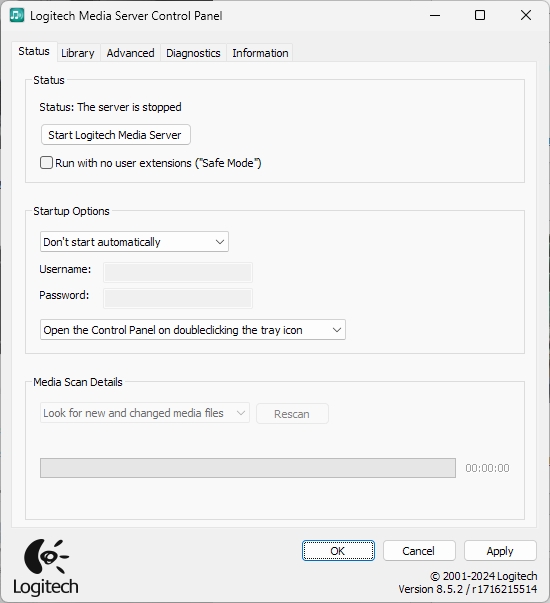
The software was easily installed and worked right away. Besides specifying the location of the music library, nothing is required to start playing music. Beyond this, the software offers many user settings that can be controlled from the LMS web interface to tweak the behavior and optimize the sound. However, this is no different for any other LMS server implementation, no matter where it runs.
Sure enough, Squeeze still sounds great with the LinQ, even when LMS runs on a standard computer. But it wasn’t quite as excellent. That’s expected and only fair, of course. What you lose when running LMS on a regular computer versus on a dedicated high-end server comes down predominantly to precision, refinement, and transparency. The sound is still visceral, propulsive, and powerful but less pure, clean, delicate, and highly resolving. In a word, it’s rougher. But to put this into perspective, I still prefer Squeeze with the LinQ to Roon running natively on any of my servers. And that is quite the achievement.
I appreciate that in classic Logitech Squeezebox terms, 6.350 euros for the LinQ sounds like a lot of money. But we’re no longer talking DIY—or Sonos-like entry-level sound quality. Even with LMS running on a standard computer, the LinQ takes the squeeze protocol into high-end territory, competing with or outperforming native Roon servers. Moreover, when the LinQ is partnered with a superb music server running LMS or Roon, such as the Antipodes, and streaming to it via UPnP or Squeeze, the combined performance competes with the best servers I heard.
Conclusion
The LinQ has always been a superb network player, but the Squeezelite Renderer module has truly surprised me. The module provides the best route for anyone seeking to extract the best possible sound from the Squeeze format at a more than fair price.
However, the Squeezelite module is not limited to LMS use. In addition, it elevates Roon’s sound quality when streaming via Squeeze to a level where it royally outperforms native Roon on any server.
In these fast-changing times, it’s great to have options. Just as I had decided to stop using Roon for now and focus on UPnP, the Aqua Squeezelite module arrived just in time. It allowed me to keep using the fantastic Roon interface and superb sound quality.

Try out Roon for yourself
External Links
Distributor for the NL/Belgium: Hexagon Audio
Manufacturer’s website: aquahifi.com
Signalyst (HQPlayer) website: signalyst.com
Read Also
Aqua LinQ review part 1 (Initial LinQ review)
Aqua LinQ review part 2 (HQ Player NAA Renderer Module)
Aqua LinQ review part 3 (HQ Player Core + NAA Renderer Module)






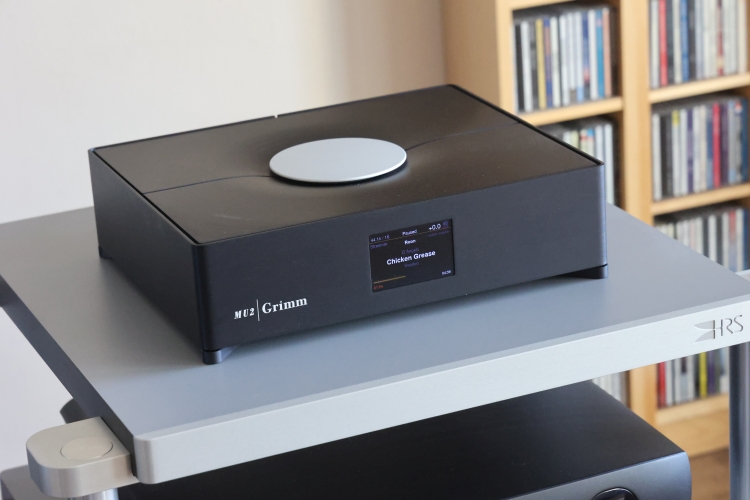
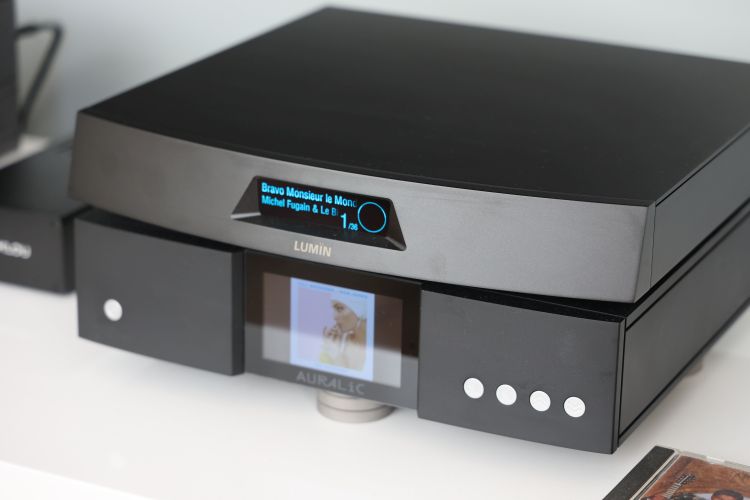
Hello Christiaan.,
Just read your new review regarding Aqua LinQ Network Interface -Squeezelite. And, you mentioned about Innuos Sense interface. If I’ll go for the LinQ as an endpoint renderer and have an Innuos Zen mk3, which I intend to use as a server, how could I connect both ? Innuos has only an USB connection for DAC and a RJ45 for connecting a streamer.
Could I use the RJ45 Aqua I2S connection ? this is the only way I guess
Hi Calin, The LinQ is a streaming endpoint, meaning that its input will always be a network connection. The protocol that can be used depends on the chosen module for the LinQ. The Innuos can function as a server, connected to a network switch. The LinQ also connects to a network switch on the same network, preferably the same switch. AQlink is no a network connection, it is Aqua’s implementation of teh I2S protocol. I2S was originally an IC to IC comms protocol. It carries separate data and clock signals, contrary to AES/EBU and S/PDIF. The downside of I2S is that it is not designed for long distances. This is what Aqua have addressed with their AQlink implementation.
And on more question please: if I don’t intend to enable and use Roon, could I go for the HQ player only ? with using same cofiguration described above ? Which module do I need inside LinQ ?
If your server supports HQP (either standalone or as part of another music software application), then you can use the LinQ with the HQP module. There are two options for that: basic and Core + NAA. There’s more information in my earlier installments of the LinQ review.
Alternatively, easier solutions are to use Squeeze server (LMS) with the Squeeze module, or MinimServer (UPnP) with the UPnP module.
Hi Christiaan
Are the cables used in this test still belden 19364 2.1mm and Oyadie c004 and Bals Schuko? I recently bought a belden 19364 cable, and the sound is very neutral and I am very satisfied. May I ask if you have connected the shield wire and ground wire in the cable to the ground terminal of the tail Oyadie C004? In addition, the European standard plug model of Bals Schuko is 7370, right? Thank you
Hi Nicholas, actually, I started using different cables and only still use the Belden for the A1.5 power amp. If you follow the “Main System” link in the review, you will see a Setup Snapshot page detailing all components and cables used at the time of that review.
Brand-name cables used:
– GigaWatt LC-2 EVO (with CH C1.2 DAC)
– GigaWatt PowerSync ULTRA (with CH L1 preamp)
– Belden 19364 with Bals schuko and Oyaide C004 IEC connectors (with A1.5 power amp)
The other components use one of the two following home-made cables:
– Block CUL 500 Enamelled solid core copper in PTFE tubing w. OEM Rhodium schuko and Oyaide 004
– OEM tinned litze in PTFE dielectric with OEM Rhodium-plated schuko and Oyaide 004
The Bals schukos I used were always Type 73 but these have been discontinued a few years back. They are superseded by the 7370. The older 73s sound a little leaner and faster, the newer ones have a little more voluminous tone.
I always attach the shield drain wire only to the wall/power-distributor side’s earth connector, not on the component side. I like the OEM Rhodium schukos a little more, they are more like the old Bals schukos and just a tad brighter, but given that they are sourced from Aliexpress and are not branded, there’s no telling what make they are.
Hello, great reviews. I really enjoy your content. I’m looking at the Antepodes k22 and the Aqua LinQ as my next transport and wondering if you would be able to compare and contrast their sound characteristics and performance? I’m upgrading DACs and looking at the MSB Discrete to pair with either transport.
Hi Javier, please see the Antipodes reviews for all comparisons I did.
Hello Cristiaan,
If using JPlay only, no Roon, which module ultimately gives the best sound, HQP Core + NAA or UPnP DLNA module?
Between HQP+NAA via Roon and UPnP native, I prefer the latter for its purer sound. However, I have only listened to the former using Roon, which also affects performance.